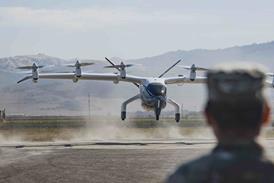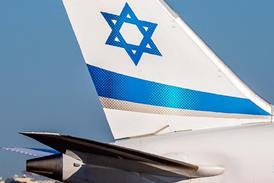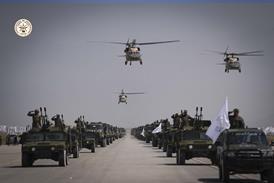Can the US Navy afford to develop a new aircraft carrier?
Ramon Lopez/WASHINGTON DC
THE US NAVY IS MOVING "full steam ahead" to develop the aircraft carrier for the 21st century. The research work, however, is competing for limited research-and-development (R&D) funding against other innovative power-projection concepts, such as the "Arsenal Ship", which would be armed with hundreds of Hughes Tomahawk cruise missiles and other precision-strike weapons.
Next to acquiring an arsenal of nuclear weapons, the pursuit of a next-generation aircraft carrier identifies a country's aspirations to project its political power beyond the near confines of its own territory.
Because carriers are prohibitively expensive to develop and maintain, only the USA now operates a fleet of them running into double figures. Even in the USA, the future of the carrier concept is being debated inside and outside the Pentagon, and the outcome of the debate remains open.
The USN maintains 12 carriers (11 active and one operational reserve) and their tactical aviation assets, which include ten active-duty air wings and one reserve wing.
Newport News Shipbuilding, the only US shipyard capable of building nuclear-powered carriers, delivered the USS John Stennis (CVN-74) to the USN in 1995, and will finish work on the Harry Truman (CVN-75) in 1998. It is under contract to build the $4.5 billion Ronald Reagan (CVN-76), the ninth Nimitz-class nuclear carrier, which will be delivered in 2003.
The USN will need another Nimitz-class carrier, the CVN-77, to replace the conventionally powered Constellation (CV-64) in 2008, with $600 million in long-lead funding requested in 2000 and 2001.
TWO-TRACK APPROACH
Under the USN's current two-track R&D approach, the tenth Nimitz-class carrier (CVN-77) could either closely resemble its predecessors, or incorporate technology developed for a possible new carrier class.
The CVN-77 would act as a "bridge", or transition ship, to a new-design large-deck CVX-78 which would replace the nuclear-powered Enterprise (CVN-65) in 2013. Advanced procurement funding for the CVX-78 would be needed in 2005.
The oil-burning John F Kennedy (CV-67) reserve training carrier would be replaced by the CVX-79 in 2018, and the CVX-80 would take the place of the original Nimitz (CVN-68) in the 2023-4 timeframe.
The USN is committed to keeping at least 12 carriers at sea indefinitely, with the Nimitz-class carrier at the heart of the USA's power-projection capabilities for years to come. The future class "flat-top" would serve to the end of the next century, however.
The aircraft carrier R&D project includes technical and operational assessments of technology and designs. Areas to be explored include affordability, survivability and improved propulsion systems (such as a hybrid nuclear/gas-turbine plant). An all-electric warship is not out of the question.
It will also address advanced aircraft launch-and-recovery systems such as the Electro-Magnetic Aircraft Launch System (EMALS) being developed for the USN by Kaman Electro-magnetics, and an internal-combustion catapult system fuelled by JP-5 jet fuel.
Researchers will study whether innovative designs and the use of radar-absorbing materials around the carrier's superstructure can reduce its radar signature.
There are those who believe, that aircraft carriers are "sitting ducks", because of their size and the proliferation of precision-guided munitions, but Rear Adm Harry Rittenour, who heads the aircraft carrier replacement effort, says "We are by no means, at the point where we think that these warships, are so vulnerable that they are no longer useful."
The USN has earmarked $8 million in the fiscal year 1996 budget for studies and limited technology exploration. Another $6 million is requested for FY1997. The Navy hopes for $2 million in each of the next four fiscal years to carry on the research.
About $1.3 billion is planned for R&D of the CVN-77 and possible follow-on. Nearly $60 million of that funding is directed to R&D of CVN-77 technologies.
The spending figures may change, however, because there is a debate within USN circles on how best to fund the CVX-78 project, and the Surface Combatant 21 programme, designed to replace the FFG-7 Perry-class frigate and the DD-963 Spruance-class destroyer.
Senior USN leadership gave the "thumbs up" on 10 February, approving the carrier replacement's mission-element-need statement. The Defense Acquisition Board, chaired by Paul Kaminski, the Pentagon's acquisition chief, is to rule on 8 April, but the senior advisory group is said to back the project and is likely to issue a favourable Acquisition Decision Memorandum (ADM).
There are those who believe that the USN needs 15 aircraft carriers, leaving the door open for development of a smaller, non-nuclear, carrier, optimised for short take-off and landing operations. It might be able to accommodate conventional take-off-and-landing operations, as well as a ski-jump or an EMALS.
Source: Flight International




















